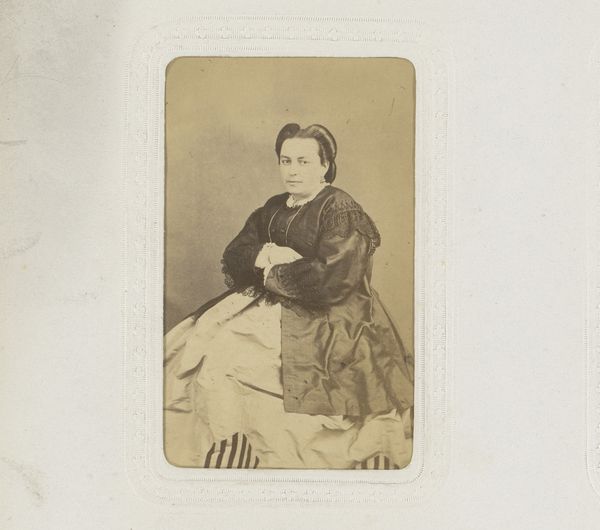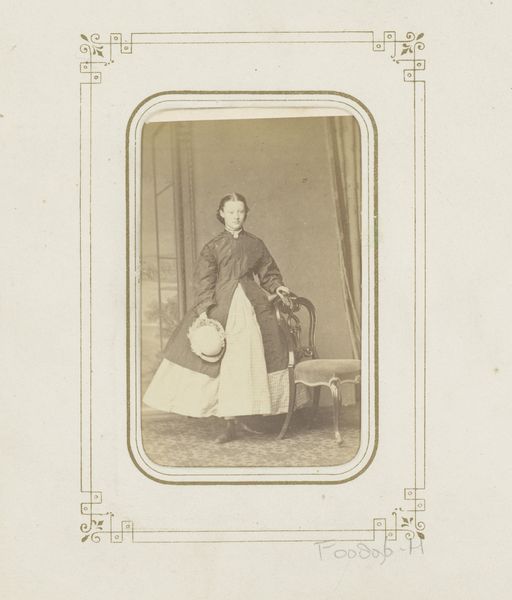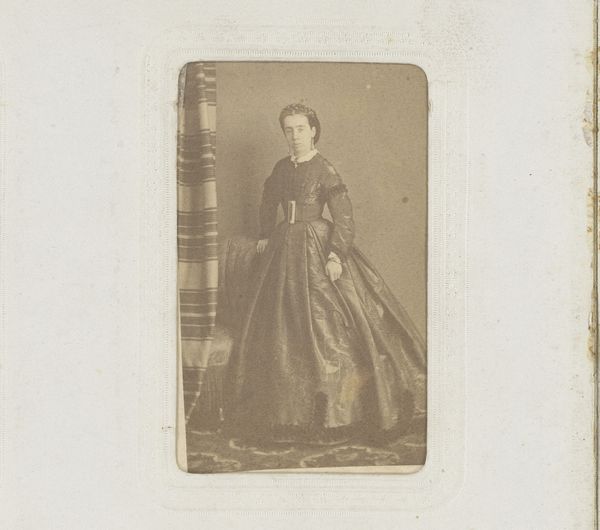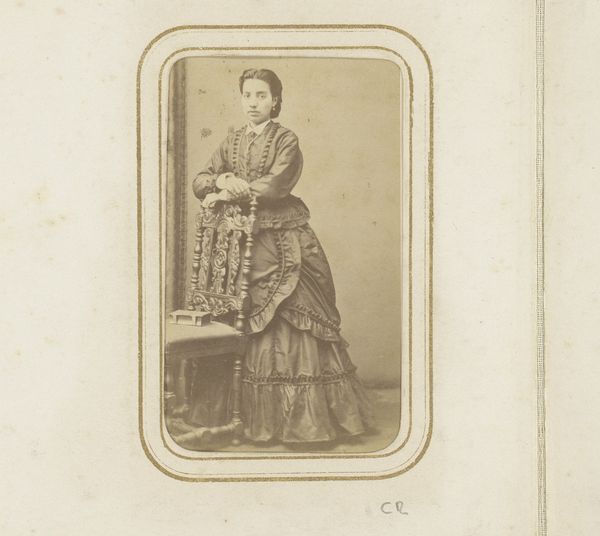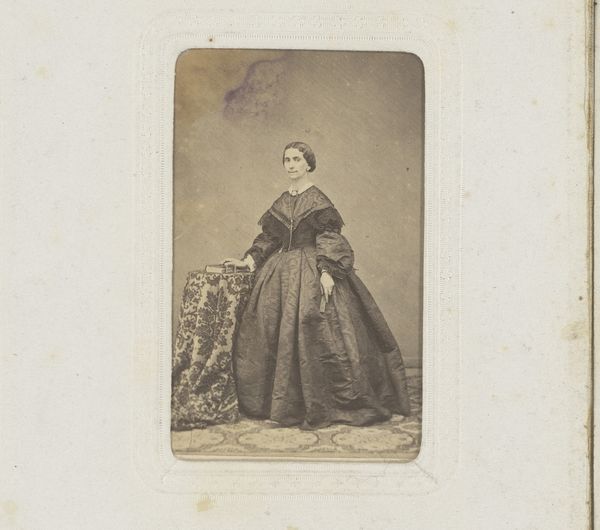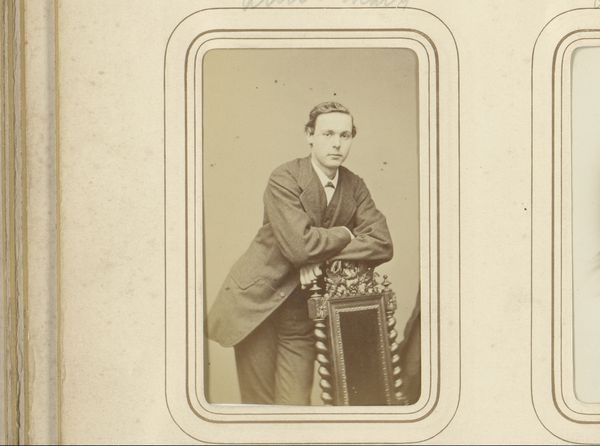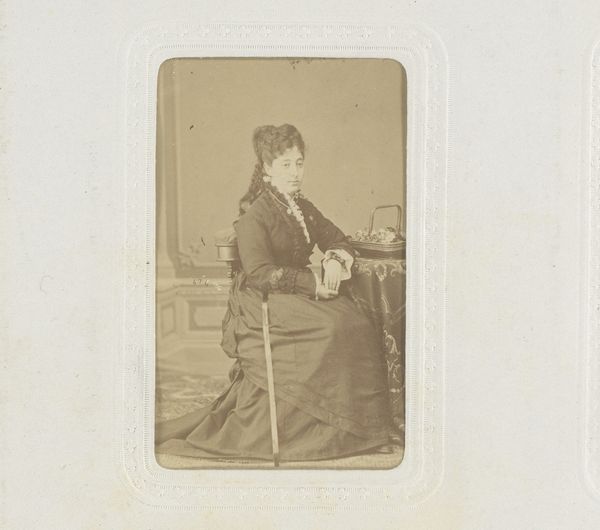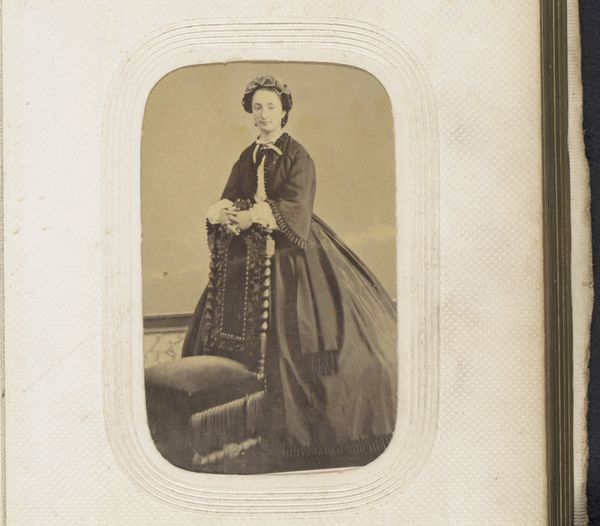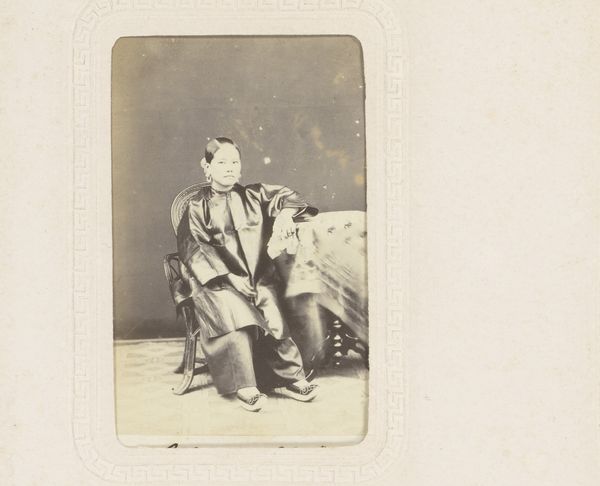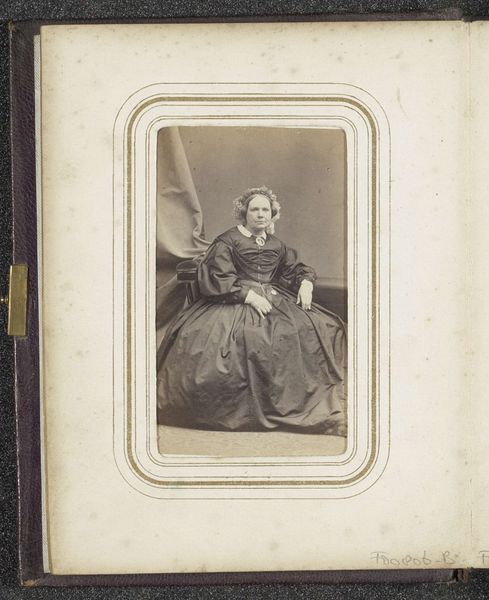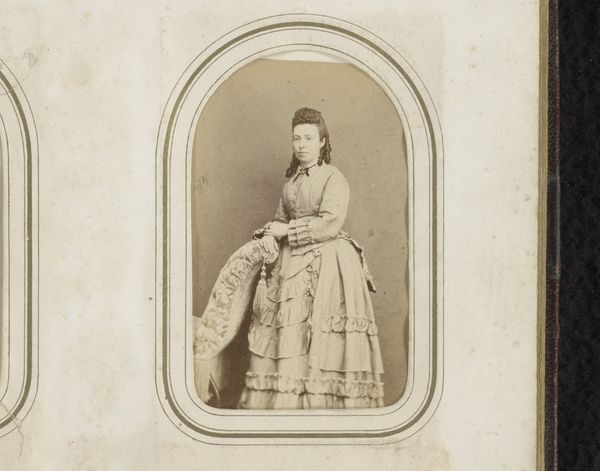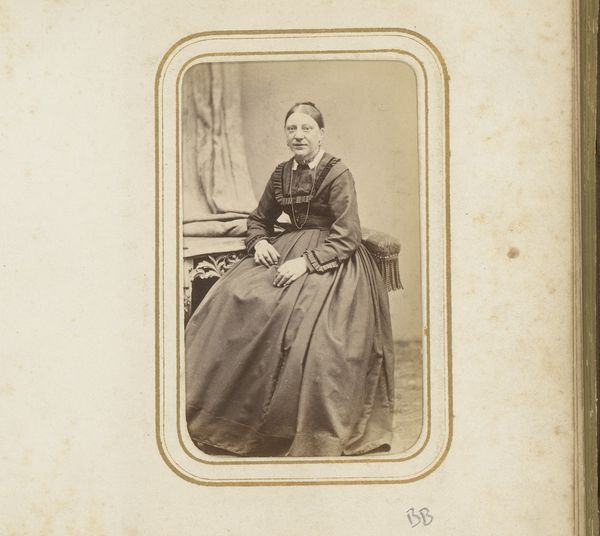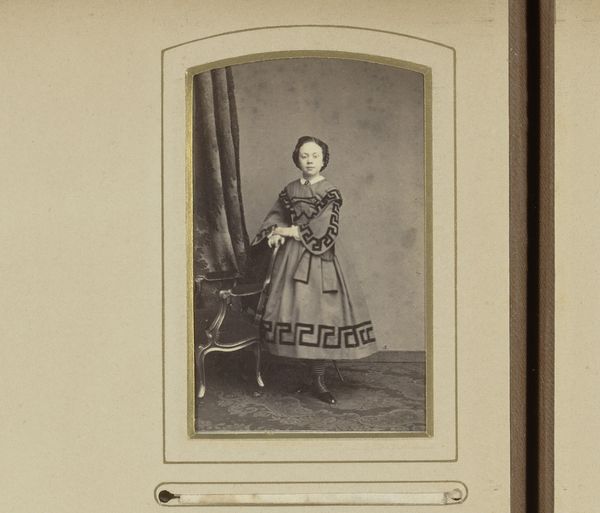
photography, albumen-print
#
portrait
#
photography
#
historical photography
#
genre-painting
#
albumen-print
Dimensions: height 86 mm, width 52 mm
Copyright: Rijks Museum: Open Domain
Curator: This is a rather poignant piece titled "Portret van een oude vrouw met sluier," dating sometime between 1860 and 1895, attributed to Eusebio Juliá. It's an albumen print, a very common photographic process in that era. Editor: The first thing that strikes me is the material abundance represented here. The billowing dress, the patterned fabric, the tassels... it’s a symphony of bourgeois textiles! Curator: Precisely. The albumen print process itself involved coating paper with egg white, which speaks to a certain level of resourcefulness and chemistry meeting artistry, doesn’t it? There’s something inherently magical in freezing a moment this way, in transforming base materials into a lasting image. Editor: The albumen process really emphasizes the image's surface, and the sepia tones here mute the impact of a potentially jarring encounter. This allows the sitter to exist without provoking strong emotional reaction. And consider the sitter's clothing. That much fabric implies wealth, the time and resources to be leisurely still for an extended portrait. Curator: Yet there’s a somberness. Look at her eyes. She is clasping that folding fan very tightly, like she has something difficult she’s been forced to accept. She is hidden under layers, isn't she, but not protected. What about the photographer, Julia, using new techniques for purposes we don’t truly understand. Editor: I'm more intrigued by the socio-economic dynamics on display. Think of the labor involved. Not just in producing the print itself – the preparation of the paper, the darkroom work, the chemical processes – but in the very dress the woman is wearing! How many hands touched that fabric, cultivated the raw materials? And it makes you think about access to those textiles, those garments, who was cut off and who could enter into the world as portrayed. Curator: And yet it makes one ponder our contemporary craving for ‘vintage’ clothing or techniques—do we actually confront the same historical conditions in modern appropriation? We play, now, with ideas and practices to express, what? And does that obscure even more the reality in this old portrait? Editor: Perhaps we appreciate how many hours have to be dedicated for art creation even if that art now takes up only an instant! The materials, the poses, the historical setting: seeing how it comes together can encourage a better understanding of the present, perhaps.
Comments
No comments
Be the first to comment and join the conversation on the ultimate creative platform.
